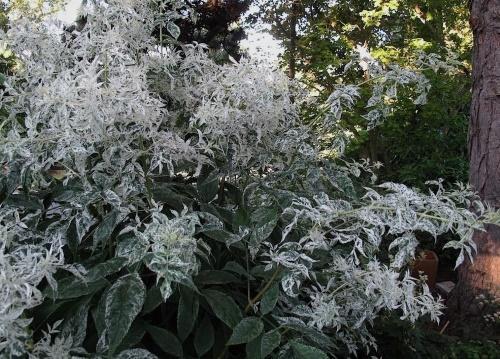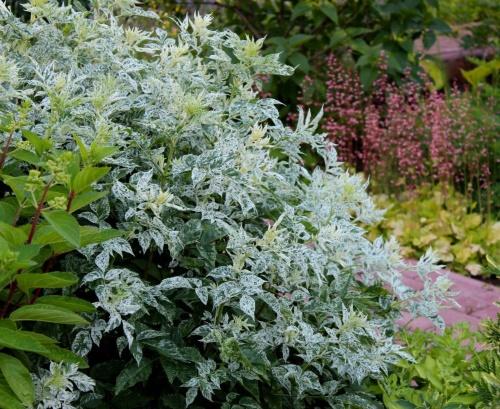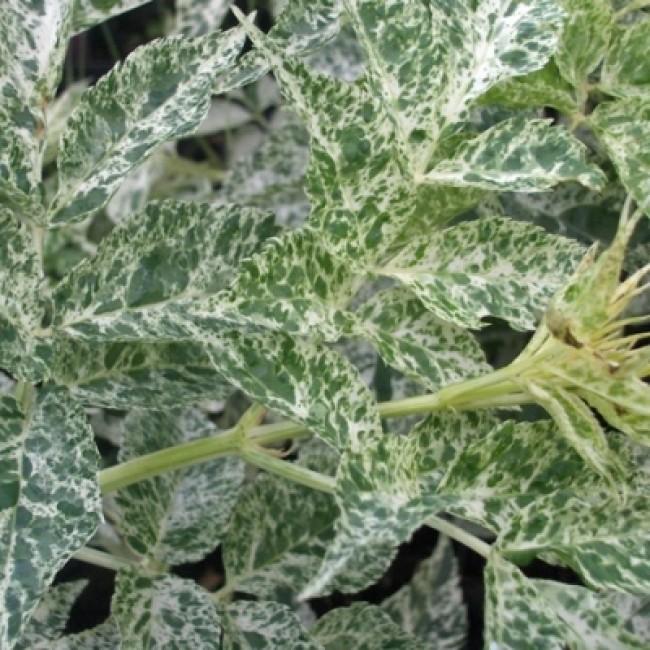Elderberry black Pulverulenta - a chic shrub with marble leaves
 If the wild elderberry can be found in the field, in the forest or along the road, then some of its species are even specially sold in nurseries. Elderberry black Pulverulent is one of the beautiful ornamental plant varieties that is often used for landscaping areas. Moreover, it is appreciated not so much for its lush flowering, as for the original colorful leaves. Quite "convenient" size bush forms a lush variegated crown and will stand out as a bright spot in the garden. What is a plant and is it difficult to grow it?
If the wild elderberry can be found in the field, in the forest or along the road, then some of its species are even specially sold in nurseries. Elderberry black Pulverulent is one of the beautiful ornamental plant varieties that is often used for landscaping areas. Moreover, it is appreciated not so much for its lush flowering, as for the original colorful leaves. Quite "convenient" size bush forms a lush variegated crown and will stand out as a bright spot in the garden. What is a plant and is it difficult to grow it?
This variety can grow not only outdoors, but also as a container crop.
Characteristic features of the variety

 In early summer, large thyroid inflorescences bloom among the variegated leaves. They are made up of small white flowers with a sweet scent. At this time, elderberry becomes the center of attention and the main decoration of the garden. Fruits, black small berries with shiny skin, ripen by autumn.
In early summer, large thyroid inflorescences bloom among the variegated leaves. They are made up of small white flowers with a sweet scent. At this time, elderberry becomes the center of attention and the main decoration of the garden. Fruits, black small berries with shiny skin, ripen by autumn.
Pulverulent is a deciduous shrub and sheds leaves for the winter.
Black elderberry Pulverulent: cultivation technology
To prevent the elderberry leaves from losing their color, plant them on the east side of the garden. There, the plant will receive enough light, but at the same time it will not be affected by the direct rays of the midday sun. From them, the leaves burn. However, the plant has good shade tolerance. True, with a lack of lighting, the pattern may disappear, and the foliage will turn green.
 Elderberry grows best in fertile, moist and loose soil with neutral acidity. But just do not plant it in the lowlands, where water accumulates and stagnates. This will lead to problems with the root system (rotting).
Elderberry grows best in fertile, moist and loose soil with neutral acidity. But just do not plant it in the lowlands, where water accumulates and stagnates. This will lead to problems with the root system (rotting).
Caring for Pulverulent is simple and consists of simple procedures:
- Water the bush regularly, especially in hot summers. Elderberry does not like drought and may not endure it without watering.
- The first two years after planting, the seedling can not be fed. From the third year, start adding a little ammonium nitrate or urea under the spring digging. They can be alternated with a slurry solution at a concentration of 1:10.
- Every 2 years in the fall, while digging the trunk circle, add organic matter (humus or compost).
- The elderberry has a high resistance to diseases and pests, but sometimes it suffers from aphids. In the spring, be sure to treat the bush for prophylaxis with special preparations.
Elderberry Pulverulent does not differ in high winter hardiness and can freeze slightly if winter is frosty. However, do not be upset: the bush will quickly restore its previous forms and even become even more magnificent. In spring, prune the damaged branches and the plant will release new shoots. And if you want to get a very dense shrub, cut it under the "stump". With the onset of warmth, the elder will give a lot of young growth and by the end of the season its crown will become dense.